Demystifying Peste des Petits Ruminants (PPR): Causes, Symptoms, and Prevention
Hey there, fellow animal lovers and livestock enthusiasts! Have you ever heard of Peste des Petits Ruminants, or simply put PPR? It might sound like a mouthful, but understanding this disease is incredibly important, especially if you’re involved in the world of small ruminants like sheep and goats.
In this blog, we’re going to unravel the mystery behind PPR. We’ll dig into what causes it, how to spot its tricky symptoms, and most importantly, how to keep our fluffy friends safe through effective prevention methods.
So, whether you’re a seasoned farmer, a curious student, or just someone with a soft spot for these adorable creatures, stick around. PPR might be a complex name, but by the end of this read, you’ll be well-versed in all things Peste des Petits Ruminants. Let’s get started!
Understanding Peste des Petits Ruminants (PPR)
Alright, let’s dive into the fascinating world of Peste des Petits Ruminants, or PPR for short. This might sound like a mouthful, but don’t worry – we’re here to break it down for you.
What’s PPR All About? Picture this: You’re in a world where sheep and goats rule the roost. They’re not just adorable; they’re also essential for livelihoods and economies. But there’s a villain in this story, and its name is Peste des Petits Ruminants.
PPR is a viral disease that targets small ruminants – that’s sheep and goats, folks. It’s been causing quite a stir in the livestock world due to its highly contagious nature. Imagine a disease that spreads faster than a wildfire through direct contact, coughs, and even contaminated surfaces. Yep, that’s PPR for you.
The History Bit PPR didn’t just pop up out of nowhere. It made its grand entrance back in the 1940s and has been causing trouble ever since. The disease was first identified in Côte d’Ivoire, but it didn’t take long for it to spread its wings (or should we say, hooves) and travel across the globe.
Who’s at Risk? When it comes to PPR, sheep and goats are the primary victims. These furry friends might seem tough, but they’re not invincible. PPR can hit them hard, leading to high fever, nasal and ocular discharge (that’s runny noses and teary eyes), coughing, and even diarrhea. In severe cases, it can be a real game-changer – and not in a good way.
Why Should You Care? Now, you might be wondering why you should bother about this disease. Well, here’s the scoop: PPR doesn’t just affect the animals. It affects the people who depend on them too. Livelihoods, food security, and economies can take a hit when PPR strikes. So, understanding the ins and outs of this disease isn’t just for animal lovers – it’s for anyone who cares about a world where humans and animals thrive together.
In the next section, we’ll unravel the mysteries behind what causes PPR. Get ready to explore the world of viruses and how they play a sneaky role in shaking up the lives of our four-legged friends.
Causes of Peste des Petits Ruminants
Alright, let’s roll up our sleeves and get into the nitty-gritty of what’s causing all the fuss with Peste des Petits Ruminants (PPR). Get ready to meet the culprit behind the scenes!
Meet the Villain: Peste des Petits Ruminants Virus (PPRV) Just like any good detective story, PPR has a main suspect, and its name is Peste des Petits Ruminants Virus, or PPRV for short. This tiny troublemaker is a member of the Morbillivirus genus, which also includes measles and canine distemper virus. But don’t be fooled by its small size – this virus packs a punch.
Passing the Torch: How PPR Spreads Now, let’s talk about how this villain spreads its mischief. PPRV is a master of disguise – it can travel through various channels, leaving a trail of infection in its wake. Direct contact between infected and susceptible animals is a prime method. Think of it like a secret handshake between animals but with not-so-friendly consequences.
But that’s not all! PPRV is also a fan of respiratory droplets, which means a simple cough or sneeze from an infected animal can send the virus on a journey to find new hosts. And here’s the kicker: contaminated surfaces can also play a role in spreading the disease. So, it’s like a puzzle where every piece contributes to the bigger picture of transmission.
The Silent Carriers Now, here’s where it gets even trickier. Some animals infected with PPRV might not show any symptoms at all – they’re like silent carriers. This means they can be walking around, looking perfectly fine, but still shedding the virus and potentially infecting others. Sneaky, right?
The Domino Effect When one animal gets infected, it’s not just about that individual. PPR has the potential to trigger outbreaks that spread like wildfire through herds. Imagine a chain reaction where one sick animal leads to a whole bunch of others falling ill. That’s the domino effect PPR can set off.
Understanding how PPR spreads and the role of its viral accomplice, PPRV, is crucial in figuring out how to stop the chain reaction. In the next section, we’ll get up close and personal with the symptoms that can help us identify this troublemaker in action. Stay tuned!
Symptoms and Clinical Presentation
Alright, folks, it’s time to put on our detective hats and learn how to spot the telltale signs that Peste des Petits Ruminants (PPR) is up to no good. Just like a mystery novel, PPR has its own set of clues – in the form of symptoms – that can help us unravel the case.
The Sneaky Symptoms Picture this: You’re hanging out with your flock of sheep and goats, and suddenly, you notice something’s off. The first sign might be a rise in body temperature – fever alert! These animals might start looking a bit down in the dumps, and if you look closely, you might notice some nasal and ocular discharge, or in simpler terms, runny noses and watery eyes.
But wait, there’s more! Coughing can also make an appearance, making it sound like there’s a tiny concert of baa-ing and coughing going on. And let’s not forget the stomach troubles – diarrhea might join the party too.
The Progression of the Plot Now here’s where the story gets interesting. PPR doesn’t just hit animals like a one-time event. It’s more like a multi-act play with different stages. In the early stages, the symptoms might be milder, but as the plot thickens, the disease can take a more severe turn.
The animals might become weak, lose their appetite, and become more susceptible to other infections due to their weakened immune systems. PPR can really throw a wrench into the lives of our fluffy friends.
Could It Be Something Else? Hold on – before you go all in on the PPR diagnosis, keep in mind that some of these symptoms can mimic other diseases too. That’s why it’s super important to have a veterinary detective on the case. They’ll use their expertise and diagnostic tools to decipher whether it’s PPR or another culprit causing the commotion.
The Takeaway Remember, spotting these symptoms early is key to getting a handle on PPR. The earlier you identify the trouble, the better chance you have of containing the outbreak and preventing further spread.
In the next section, we’re putting on our lab coats and diving into the world of diagnostics – how do we confirm that it’s indeed PPR and not some other impostor? Stick around, fellow detectives!
Diagnostic Methods
Alright, fellow detectives, let’s roll up our sleeves and venture into the world of diagnostics. When it comes to Peste des Petits Ruminants (PPR), figuring out if it’s the real deal requires some scientific sleuthing. Get ready to uncover the tools and methods that help us crack the case!
The Puzzle Pieces: Diagnostic Techniques Think of diagnosing PPR as piecing together a puzzle. You’ve got various techniques that, when combined, give you a clear picture. Here are some of the methods used by our veterinary sleuths:
- Serological Tests: These tests check for the presence of antibodies in an animal’s blood. If the antibodies specific to PPR are detected, it’s like finding a key piece of evidence that points to the culprit.
- Polymerase Chain Reaction (PCR): PCR is like the DNA testing of the veterinary world. It can identify the genetic material of the PPR virus in samples, such as nasal swabs or blood. If the virus’s genetic fingerprints match, it’s a strong sign that PPR is in the vicinity.
- Virus Isolation: This technique involves trying to grow the actual virus from collected samples. It’s like capturing the suspect in a net – if the virus starts growing, it’s a pretty solid confirmation of PPR’s involvement.
The Detective Duo: Vet and Lab Remember, the success of these diagnostic methods often relies on a dynamic duo: skilled veterinarians and advanced laboratories. These experts work hand in hand to interpret the clues collected from samples and draw the right conclusions.
Why Diagnostics Matter Getting the diagnosis spot on is essential, not just to confirm the presence of PPR, but also to rule out other diseases that might look similar. This accuracy is crucial for taking the right steps to contain the outbreak and protect our herds.
Solving the PPR mystery requires a blend of cutting-edge science and the expertise of skilled professionals. Together, they’re like a crime-solving team, ensuring that we’re not just guessing, but actually dealing with PPR head-on.
In our next section, we’ll explore how we can prevent the spread of PPR and keep our furry friends safe. So stay tuned, because prevention is the ultimate goal in our quest to outsmart this tricky disease!
Prevention and Control Strategies
Alright, folks, now that we’ve unraveled the mysteries of Peste des Petits Ruminants (PPR), it’s time to talk about how we can put an end to its sneaky antics. Prevention and control strategies are our secret weapons – let’s dive in!
Vaccination: A Shield of Protection One of the most powerful tools in our arsenal is vaccination. Just like superheroes getting their suits on, vaccinating our herds can provide a shield of protection against PPR. Effective vaccines have been developed, and getting animals vaccinated helps build their immunity to fight off the virus. It’s like giving them a superhero boost to resist the villainous PPR.
Biosecurity: Fortifying the Defenses Imagine a fortress protecting our animals from harm – that’s biosecurity. It involves implementing measures to prevent the introduction and spread of PPR. This includes controlling the movement of animals, sanitizing equipment, and even using disinfectant footbaths to keep the disease at bay.
Quarantine and Isolation: Keeping Trouble at Bay When a potential case of PPR pops up, it’s like a red flag waving. Isolating and quarantining the affected animals can help prevent the disease from spreading like wildfire through the herd. It’s like keeping the troublemaker in a time-out corner until the situation is under control.
Raising Awareness: Spreading the Word Educating livestock owners, herders, and communities about PPR is another critical step. Knowledge is power, and by raising awareness about the disease, its symptoms, and preventive measures, we’re empowering people to take action and protect their furry companions.
Collaboration: United Against PPR No detective works alone, and the same goes for combating PPR. Collaboration between governments, NGOs, international organizations, and local communities is essential for a coordinated effort. By joining forces, we can share resources, knowledge, and strategies to tackle PPR on a larger scale.
The Final Verdict: Prevention Wins When it comes to PPR, prevention truly is the hero of the story. By vaccinating, implementing biosecurity measures, isolating potential cases, raising awareness, and collaborating, we’re not just containing the disease – we’re working towards eliminating it altogether.
So, there you have it, fellow warriors against PPR! By following these strategies, we’re taking a stand to protect our adorable sheep and goats from the clutches of this tricky virus. In our final section, let’s take a look at some global success stories and what the future holds in our battle against PPR. Stay tuned for the grand finale!
Global Efforts and Success Stories
Welcome to the grand finale of our journey through the world of Peste des Petits Ruminants (PPR)! We’ve covered the causes, symptoms, and prevention strategies, and now it’s time to shine a spotlight on the global efforts and success stories that give us hope for a PPR-free world.
A United Front Against PPR Picture this: experts, governments, organizations, and communities from all corners of the globe coming together like a superhero team to combat PPR. That’s not just a dream – it’s a reality. Different regions have joined forces to create action plans, share knowledge, and develop strategies to fight PPR.
Success Stories: Eradication in Action Remember, every villain has its downfall, and PPR is no exception. Several regions have successfully eradicated or controlled PPR outbreaks through a combination of smart strategies. For instance, Bhutan, Nepal, and several countries in West Africa have made significant progress in reducing PPR’s impact.
The Role of Vaccination Vaccination campaigns has played a significant role in these success stories. By ensuring that a high percentage of animals are immunized, these regions have created a barrier against PPR’s spread. It’s like building a protective wall around vulnerable populations.
Community Engagement: The Power of Awareness Imagine villagers and herders working hand in hand with scientists and veterinarians. This kind of collaboration is making a real difference. Educating local communities about PPR, its prevention, and the importance of reporting cases has led to early detection and faster response times.
The Future: A PPR-Free World? The fight against PPR is far from over, but the successes we’ve witnessed provide a glimpse into what the future could hold. With continued global collaboration, research, and concerted efforts, there’s a possibility that we could see a world where PPR is no longer a threat.
Your Role in the Story You might be wondering, “What can I do to be part of this story?” Well, even though you might not be a scientist or a veterinarian, you can still play a crucial role. Supporting vaccination campaigns, spreading awareness, and staying informed are steps that each one of us can take.
Heroes in the Making As we wrap up our exploration of PPR, remember that every step we take, no matter how small, contributes to a larger narrative. We’re all part of this story, and together, we’re working towards a future where Peste des Petits Ruminants is nothing more than a chapter in the history books.
So, fellow adventurers, let’s continue our journey towards a world where our furry friends can roam freely, healthy, and happy, without the threat of PPR lurking in the shadows. And with that, our tale comes to an end. Until next time, keep exploring and keep making a difference!
Future Outlook
Alright, fellow visionaries, let’s cast our gaze toward the horizon and ponder the future of our battle against Peste des Petits Ruminants (PPR). What lies ahead? What advancements, challenges, and opportunities await us in this ongoing saga? Buckle up, because the future is full of potential!
Advancements in Science and Technology As technology marches forward, so does our ability to tackle PPR. We can expect more sophisticated diagnostic tools, quicker and more accurate testing methods, and even smarter vaccines that provide longer-lasting immunity. Scientists are at the forefront, constantly working to enhance our understanding and weaponry against PPR.
Global Collaboration and Partnerships The power of unity cannot be underestimated. Continued collaborations between nations, organizations, and communities will play a pivotal role. Sharing knowledge, resources, and best practices across borders can accelerate progress and ensure a more comprehensive approach to PPR management.
Awareness and Education The future holds exciting possibilities for raising awareness on an even larger scale. With the rise of digital platforms and social media, spreading information about PPR, its prevention, and its impact can reach a wider audience. Every person informed becomes a potential advocate for change.
A PPR-Free World: Is It Possible? The big question on everyone’s mind: Can we achieve a world without PPR? Well, while total eradication might be a challenging endeavor, significant control and reduction of the disease’s impact are well within our reach. With every successful campaign, every vaccinated animal, and every community educated, we’re inching closer to that goal.
Remaining Vigilant But here’s the catch: even as we make strides forward, we can’t let our guard down. PPR might retreat, but it’s a wily adversary that could resurface if we become complacent. Continued surveillance, preparedness, and a proactive approach will be crucial to maintaining our progress.
Your Role in Shaping the Future Remember, you’re not just a passive observer in this story. Your actions, no matter how small, contribute to the grand narrative. By staying informed, supporting vaccination campaigns, and advocating for PPR awareness, you become an agent of change in shaping a brighter future.
A Journey of Hope As we set our sights on the future, let’s hold on to hope and determination. The journey to conquer PPR is ongoing, but with the collective efforts of scientists, veterinarians, communities, and individuals like you, we’re scripting a tale of triumph over this tricky disease.
So, here’s to the future – to a world where our beloved sheep and goats can thrive, where livelihoods are secure, and where Peste des Petits Ruminants is but a distant memory. Let’s keep marching forward, united in our quest for a healthier, happier planet. Onward we go!
Conclusion:
A Brighter Horizon for Peste des Petits Ruminants
And so, dear readers, we reach the final chapter of our journey through the realm of Peste des Petits Ruminants (PPR). From its mysterious origins to its sneaky tactics, from the telltale symptoms to the strategies of prevention, we’ve covered it all. But as our story comes to a close, let’s recap the key takeaways and set our sights on the path ahead.
A Quest for Knowledge and Protection We embarked on this adventure to demystify PPR, and we’ve emerged with a wealth of insights. We’ve learned that PPR isn’t just a concern for livestock; it’s a concern for us all. It threatens not only the health and well-being of animals but also the livelihoods of countless individuals who depend on them.
Vigilance and Unity as Our Weapons But fear not! Armed with knowledge, prevention strategies, and a united front, we’re better equipped to face the challenges PPR presents. Vaccination, biosecurity, awareness, and collaboration stand as our guardians against the spread of this disease.
A Collective Story of Triumph As we’ve seen, success stories from around the world prove that our efforts can yield results. Countries and communities have joined hands, and together, they’ve made progress in controlling and even eradicating PPR from their midst.
The Future: A Blank Page of Possibilities While our tale here may be concluding, the larger narrative continues. The future is a blank page, waiting for us to write our next chapters. Advancements in science, growing awareness, and ongoing partnerships promise a brighter horizon where PPR’s influence diminishes further.
Your Role: The Hero’s Journey Remember, you’re not just a reader of this story – you’re a participant. Each action you take, whether it’s supporting vaccination efforts, sharing knowledge, or promoting biosecurity, contributes to the resolution of this challenge.
Thank You for Joining the Adventure As we close this book, we extend our gratitude for joining us on this adventure. The journey to understand, prevent, and ultimately conquer Peste des Petits Ruminants is a collective one. Together, we’re writing a story of resilience, innovation, and the power of human and animal bonds.
So, here’s to a future where PPR’s grip weakens, where our herds flourish, and where communities thrive. With hearts full of determination, let’s step forward into that future, ready to face whatever challenges come our way. The story continues, and we’re all authors of its next thrilling chapters. Onward!



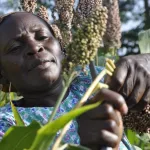

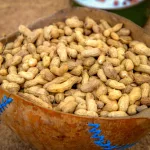
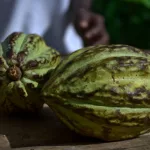
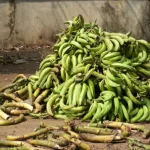

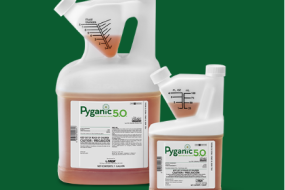
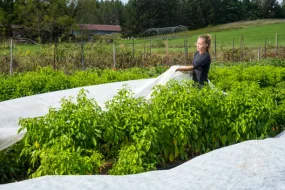
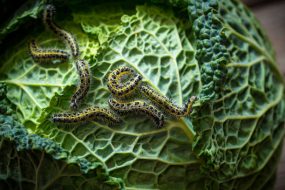
2 replies on “Discover The Causes, Symptoms, and Prevention of Peste des Petits Ruminants (PPR) Viral Disease”
[…] Also Read>>>>>Discover The Causes, Symptoms, and Prevention of Peste des Petits Ruminants (PPR) Viral Disease […]
[…] Also, Read >>> Discover The Causes, Symptoms, and Prevention of Peste des Petits Ruminants (PPR) Viral Disease […]